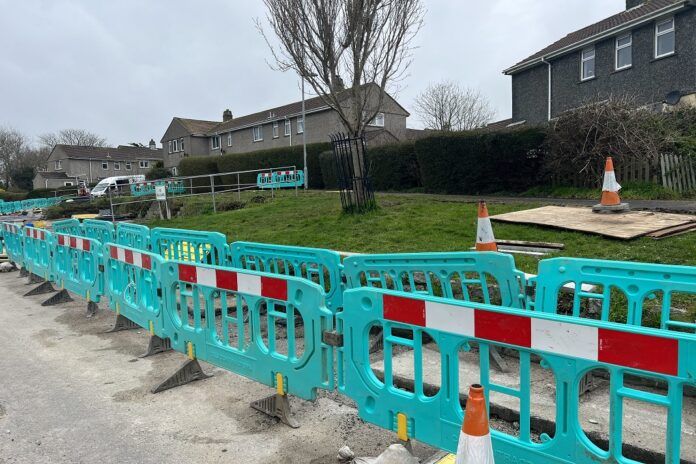
The first resident in the Cornish village of Stithians has had their ground source heat pump (GSHP) connected to an ambient heat network that will draw energy from under the street.
A statement has said that it’s thought to be a world-first shared ground array being retrospectively installed in a public highway.
Heat the Streets is a project run by Kensa Utilities and part funded by the European Regional Development Fund (ERDF), and represents a significant investment in the future of sustainable energy, according to a statement.
Each home involved in Heat the Streets is to swap either carbon intensive oil or LPG fossil fuels for its own low carbon Kensa ground source heat pump that will provide 100% of the property’s heating and hot water year round. Homeowners will pay a monthly standing charge to access the heat network, much like the existing gas connection fee.
The in-road ground source heat pump network, also known as Networked Heat Pumps, in Collins Parc, Stithians, will consist of 42 boreholes, drilled to an average depth of 106m. It allows homeowners to utilise the heat from the ground to keep their houses warm and reduce carbon emissions. The infrastructure emulates the existing gas grid and has been designed to accommodate future connections, allowing households who were not ready to change their heating system to connect at a later date.
Unlike traditional district heating, there is no need for a central plant, no heat loss around the network, and customers can still change their energy provider at will, promoting energy independence.
According to a statement, heating accounts for around 30% of the UK’s carbon emissions and The Committee on Climate Change estimates 80% of the buildings that will be here in 2050 have already been built. As ground source heat pumps are electrically powered, non-combustion devices that emit no local emissions or air pollution, they will reduce the carbon output associated with heating each home by around 70%, Kensa has said.
Wouter Thijssen, managing director of Kensa Utilities, said: “It’s fantastic to have the first heat pump up and running on this landmark project which provides a blueprint for the decarbonisation of heating in the UK. Our model replicates the gas network with a pipe in the ground, a flat rate standing charge to consumers and a little white box in the house.
“Just as Burton Upon Trent was the first UK town to convert to natural gas in 1968 – at the time a cheaper, better, cleaner fuel than towns gas – we believe Stithians is the first UK town to convert to the 21st-century equivalent: networked heat pumps. Residents will have access to a network that will provide cheaper and cleaner heat for 100 years to come.”
